Flying can be a stressful experience, especially when it comes to packing and adhering to airline regulations.
Many travelers wonder whether they can bring aerosol products on board a flight.
This blog post will explore whether it is allowed to fly with aerosol and what restrictions may apply.
Aerosol products, such as hairspray, deodorant, and spray sunscreen, are convenient and widely used in everyday life.
However, due to their pressurized containers, certain rules and regulations are in place to ensure the safety of passengers and crew members during air travel.
The regulations may vary slightly from one airline to another, but there are some general rules to keep in mind, such as size restrictions, quantity limits, packaging requirements, etc.
What Are Aerosol Products?
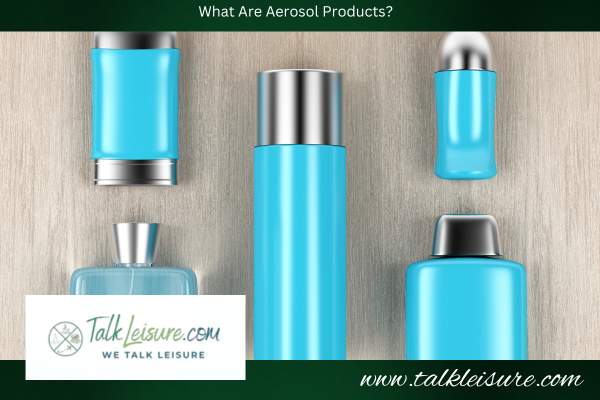
Aerosol products are pressurized containers that release a fine mist or spray when the valve is activated.
They are commonly used for personal care products, such as deodorants, hairsprays, shaving creams, and household cleaning products.
When it comes to bringing aerosol products in your carry-on or checked luggage, you must follow specific airline guidelines.
It’s important to note that these guidelines may vary depending on the airline and destination, so it’s always a good idea to check with the specific airline and review the TSA website for the most up-to-date information before your flight.
Can You Fly With Aerosol?
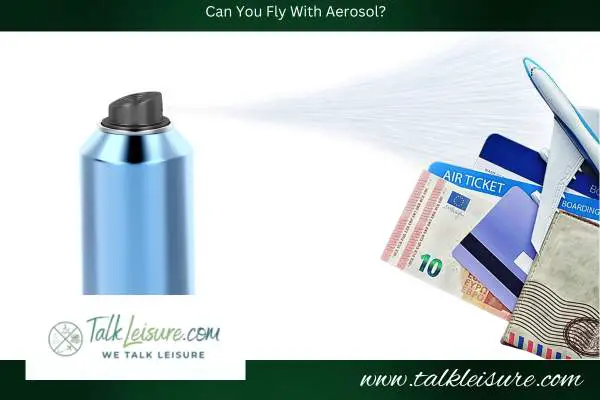
When it comes to flying with aerosol products, it’s important to familiarize yourself with the Federal Aviation Administration (FAA) guidelines. The FAA sets rules and regulations to ensure the safety of passengers and crew members on board aircraft.
So, can you fly with aerosol?
The answer is yes, but there are certain restrictions and rules that you need to be aware of.
By following these guidelines and being mindful of the restrictions, you can safely travel with aerosol products and ensure a smooth journey.
Where To Pack the Aerosol (Carry-On Or Checked Luggage)?
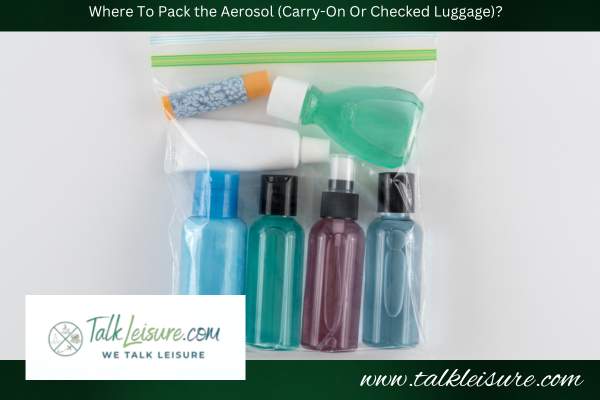
When it comes to flying with aerosol products, it’s crucial to understand the specific airline policies regarding their transportation.
Different airlines may have varying rules and regulations, so checking with your airline before packing any aerosol products is essential.
Here are some general guidelines to keep in mind:
The Transportation Security Administration (TSA) allows aerosol products in both carry-on and checked luggage with certain restrictions.
However, it’s important to check with your specific airline as they may have additional rules or limitations.
By understanding the specific airline policies and adhering to the TSA’s guidelines, you can safely travel with aerosol products and enjoy a hassle-free journey.
If you are flying with a pack and play or other baby items ensure to check the airline policies. The policies on these items will be quite different from aerosols.
What Are The TSA Rules And Regulations For Aerosols?
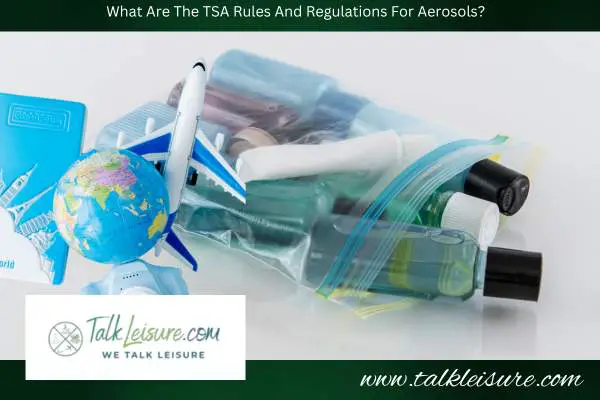
When it comes to traveling with aerosol products, it’s important to be aware of the rules and regulations set by the Transportation Security Administration (TSA).
Here are some key points to keep in mind to ensure a smooth and hassle-free travel experience:
1. Size And Quantity
The TSA allows passengers to bring aerosol products in their carry-on bags as long as they comply with the liquids rule.
Each aerosol container must be 3.4 ounces (100 milliliters) or smaller.
Remember that all aerosol containers must fit comfortably in a quart-sized, clear plastic zip-top bag.
2. Checked Baggage
If you wish to bring aerosol products exceeding the allowed size limit, pack them in your checked baggage.
However, it’s important to check with your airline as they may have specific regulations or restrictions on aerosols in checked baggage.
3. Declaration And Inspection
When going through the security checkpoint, passengers must present their quart-sized bags containing aerosols separately to the TSA officer for inspection.
This helps expedite the screening process and ensures compliance with the rules.
4. Security Screening Process
Like all liquids, aerosol containers must be removed from carry-on bags and placed in a bin for X-ray screening.
This allows TSA officers to get a clear view of the contents and ensure they meet the established guidelines.
5. Restricted Items
It’s important to note that not all aerosol products are allowed in carry-on bags or checked baggage.
Certain flammable or hazardous aerosols, such as spray paint or insecticides, are prohibited.
It’s crucial to review the TSA’s list of prohibited items to avoid any issues during the screening process.
For more detailed information on traveling with aerosols, it’s recommended to visit the TSA website or contact your airline directly for any specific requirements they may have.
By following these safety measures and adhering to the TSA’s rules and regulations, you can ensure a stress-free journey when traveling with aerosol products.
Remember to pack them properly, declare them during security screening, and comply with any additional instructions given by the TSA or airline staff.
What Are The FAA Regulations For Carrying Aerosol On Board?

When it comes to flying with aerosol products, it’s important for passengers to be aware of the Federal Aviation Administration (FAA) regulations to ensure a smooth and safe journey.
Here are some guidelines to keep in mind:
1. Size Limitations
The FAA allows passengers to carry aerosol products in their carry-on baggage if the total volume does not exceed 100 ml or 3.4 ounces.
This includes all aerosol products, such as hairspray, deodorant, and insect repellent.
2. Packaging
Aerosol products must be properly packaged in a leak-proof container that can withstand pressure changes during the flight.
It is recommended to place aerosol products in a clear, resealable plastic bag to facilitate the security screening process.
3. Quantity Limitations
Passengers are allowed to carry one clear plastic bag containing their aerosol products, with each container not exceeding 100 ml or 3.4 ounces.
This limitation is in place to prevent the risk of combustion or explosion in case of accidental activation or leakage.
It is important to note that specific airlines may have additional restrictions or policies regarding the transportation of aerosol products.
It is advisable to check with the airline before your flight to ensure a hassle-free journey.
By following these guidelines and understanding the regulations set by the FAA, passengers can confidently travel with their aerosol products while ensuring the safety and security of everyone on board the aircraft.
What Are The Tips For Traveling With Aerosol?

Traveling with aerosol products can be a bit tricky due to the restrictions and regulations imposed by airlines.
However, with proper planning and preparation, it is possible to fly with aerosol products.
Here are some tips to help you navigate the process:
1. Check Airline Restrictions
Before your trip, make sure to check the specific restrictions imposed by the airline you are flying with.
Some airlines may have different rules regarding the size and quantity of aerosol products allowed onboard.
2. Follow TSA Guidelines
The Transportation Security Administration (TSA) in the United States has specific guidelines for traveling with aerosol products.
According to the TSA, aerosol products are allowed in checked bags as well as carry-on bags as long as they meet certain requirements.
The container size for aerosol products in carry-on bags should not exceed 3.4 ounces or 100 milliliters.
3. Pack Properly
When packing aerosol products, it is important to ensure that they are sealed properly to prevent leaks during transit.
Place them in a clear plastic bag and separate them from other liquids and gels in your carry-on bag.
4. Declare At The Security Checkpoint
When going through the security checkpoint, make sure to declare any aerosol products you are carrying.
This will help facilitate the screening process and avoid any delays.
What Are The Alternative Options For Aerosol Products?
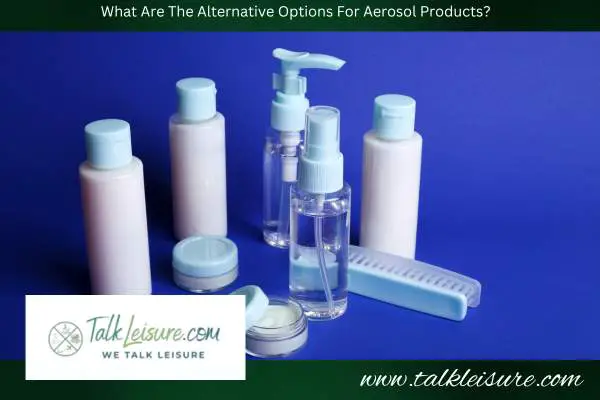
If you are concerned about flying with aerosol products or if they are not allowed by your airline, there are alternative options available.
Consider the following:
1. Pump Sprays
Instead of aerosol sprays, opt for pump sprays.
These products work similarly to aerosols but do not contain propellants, making them a safer and more travel-friendly option.
2. Solid Or Powder Alternatives
Look for solid or powder alternatives to aerosol products.
For example, solid perfumes, dry shampoos, and powder deodorants are compact and easy to travel with.
3. Transfer To Travel-Sized Containers
If you cannot find suitable alternatives, consider transferring your aerosol products into travel-sized containers that meet the airline’s size restrictions.
What Are The Potential Risks Of Flying With Aerosol?

Flying with aerosol products can pose certain risks due to their pressurized nature.
The biggest concern is the potential for the cans to rupture or explode due to changes in air pressure during the flight.
This is why airlines have strict regulations in place.
If an aerosol can rupture or explodes, it can cause injuries to passengers and damage to the aircraft.
It can also lead to a fire hazard if the propellant is flammable.
Therefore, airlines take these risks seriously and enforce restrictions on aerosol products.
Similar explosive products like propane are prohibited on plane due to safe concerns.
Conclusion
While it is possible to fly with aerosol products, it is important to check the restrictions imposed by the airline and follow the guidelines set by the TSA or relevant authorities.
Consider alternative options or transfer the products to travel-sized containers if needed.
By being informed and prepared, you can ensure a smooth and hassle-free travel experience.
Aerosol products are subject to size and quantity limitations.
Larger aerosol containers, such as those used for hair spray or sunscreen, are not allowed in carry-on bags and should be packed in checked luggage.
If you are unsure about the restrictions or regulations for a specific aerosol product, it’s always best to check with your airline or the TSA before your flight. This can help avoid any issues or delays during the security screening process.






